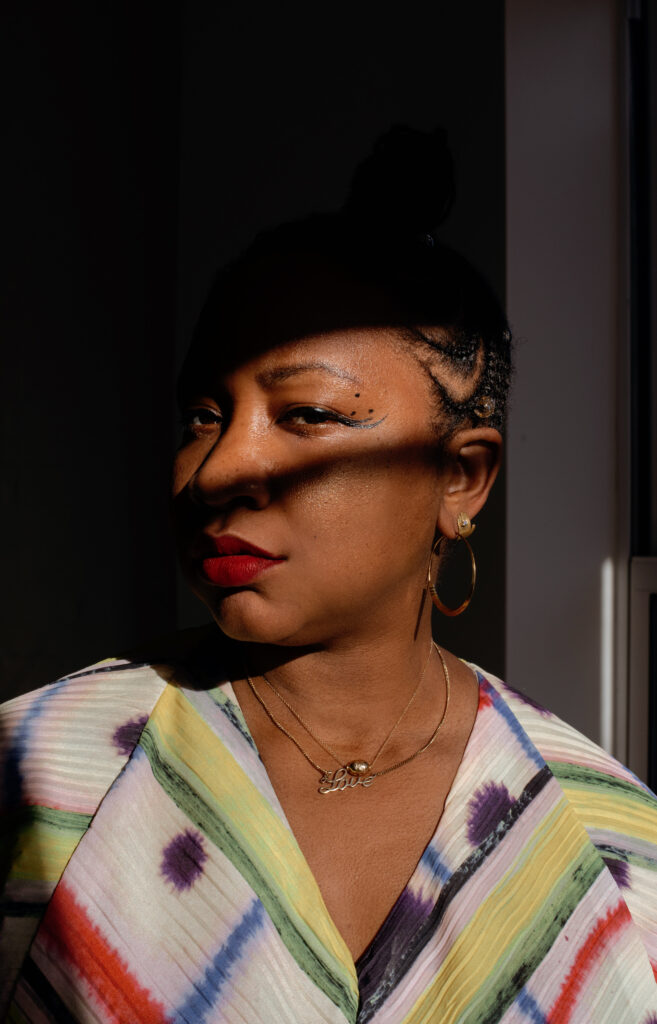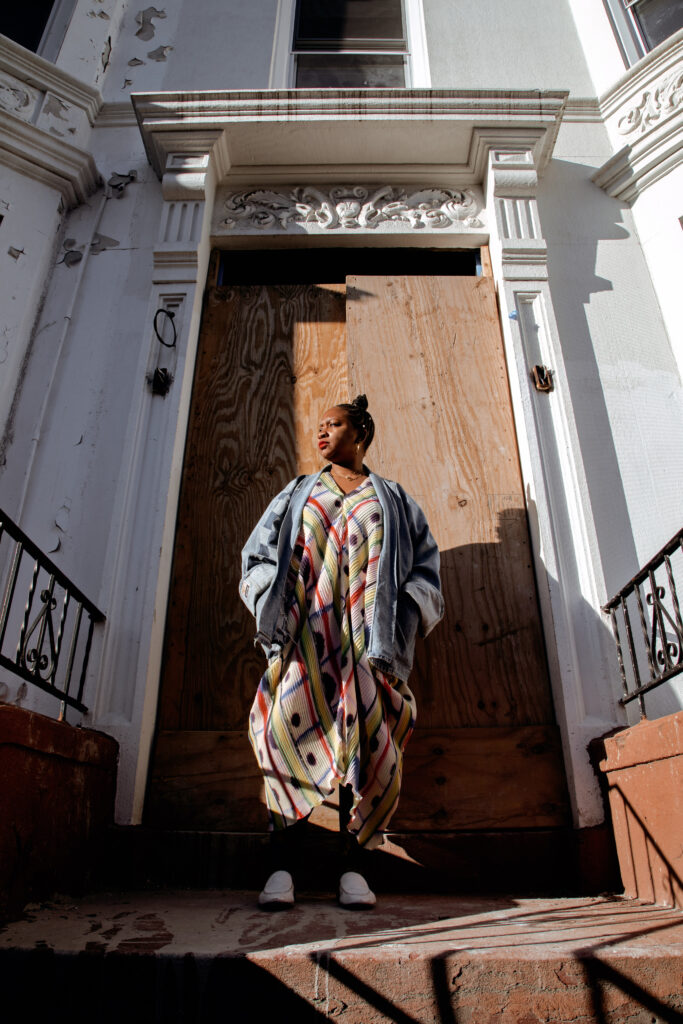“My uncle was just such a big part of his community and the land. The land is the foundation that my uncle left of us and it will be here for generations and generations to come. It seems simple but it’s actually quite brilliant what he created.”
What is your occupation?
I’d say I’m an entrepreneur. I own a restaurant with my husband. We also own a shop next door to the restaurant that sells a lot of just local, cool, fun stuff from clothing to artifacts and accessories. So I own a shop, a restaurant, and I’m a full-time mom — like that’s the jobs right there.
And what would you describe as your nationality or cultural background?
My parents are from the Caribbean (Trinidad). And we’re the first generation from the states. So we’re Caribbean American.
What is your ownership story?
Inheritance. My property has been in my family since the 1950s, and it just got passed down through my family. It was actually my great uncle that bought it, and the story is that it was difficult [to buy a home]. My great uncle worked for the bank, but it was really about who you knew, and you really had to have your portfolio, your numbers and everything together. It wasn’t as easy. You really had to show a strong kind of footing to be able to pull out all the stops and all the connections and everything you have to be able to secure the property that he did.
How has the community changed since you moved in?
The neighborhood has really changed because when I first moved in, the neighborhood didn’t have much [outside of Franklin Avenue]. It was just a lot of families. That felt really good, but there really wasn’t a lot to do. There were a lot of Caribbean restaurants and I really loved that you could easily access really authentic Caribbean food, but in terms of different coffee shops, and places to hang out and that kind of thing, there wasn’t that much of that.
Suddenly [businesses] started to pop up, but they didn’t feel like they were really for us. When I say “for us,” I mean for Black and Brown people with Caribbean and African backgrounds. That honestly is what fueled us into figuring out the whole restaurant thing. So much change was happening and it felt really good for us to be able to be a part of the change. You know what I mean?
For us to put a restaurant in the neighborhood, then change no longer felt like it belonged to someone else. It feels like we had a hand in that change. I remember when Barboncino first opened and their kitchen closed late like 1 a.m., and we were so excited to actually leave our apartment at 11 p.m. and walk to go have dinner. It just felt really good to have that as an option in the neighborhood. We wanted to be a part of that change. We watched the neighborhood, over the last 15 years or so, really change and become the place to be. It feels good to be a part of that change.
Speaking of your home, specifically, can you tell us what your favorite part is about your home?
The whole home has transformed, and it’s under construction right now. So my favorite area is still being built, but it’s my kitchen. I just feel like for me now, especially with my kids and my husband, we’re all so busy. Everyone has their schedules. It’s just a place of duty, but we can all kind of come together. We are restaurant people, so we love to entertain. Being able to have friends or family around this kitchen that we really carefully planned out and curated, that’s important, and makes me happy. And my bed. I like my bedroom! My family likes to watch a lot of TV, and I like to watch what I want to watch when I want to watch it. So the TV in my room is where I go to lay in my bed and watch my Netflix. And that’s my private space and my sanctuary.
Do you still feel like pieces or parts of your uncle are still there even with the renovations that are taking place?
My uncle was just such a big part of his community and the land. The land is the foundation that my uncle left of us and it will be here for generations and generations to come. It seems simple, but it’s actually quite brilliant — what he created.
What is the generational significance, especially for Black people, around homeownership and, what it means for future generations. What did this mean for you?
I think it’s the heartbeat of everything. We’re able to have what we have today because of decisions that my great uncle made in the 50s. Here we are in 2021 and it’s still here for my family and my children. And now the work that we’re doing on this house is for my grandchildren, and generations beyond. It really is a roadmap, a foundation.
Land ownership [is]…essential for generational growth…You can just build and build and build and build on that. I think it’s really important that we continue to acquire property, hold on to it, and breathe new life into it. That foundation is going to be there forever. That’s like, super important.
The article has been edited and condensed for clarity.


